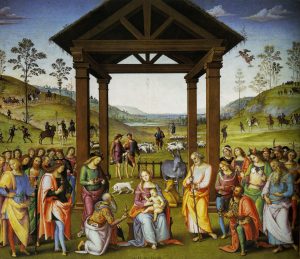3 or 12
Magi, singular Magus, also called Wise Men, in Christian tradition, the noble pilgrims from the East who followed a miraculous guiding star to Bethlehem, where they paid homage to the infant Jesus as king of the Jews (Matthew 2:1–12). Christian theological tradition has always stressed that Gentiles as well as Jews came to worship Jesus—an event celebrated in the Eastern church at Christmas and in the West at Epiphany (January 6). Eastern tradition sets the number of Magi at 12, but Western tradition sets their number at three, probably based on the three gifts of gold, frankincense, and myrrh (Matthew 2:11) presented to the infant
The tradition of the Christmas tree developed in early modern Germany where it is today called Weihnachtsbaum or Christbaum or Tannenbaum. The evergreen fir tree has traditionally been used to celebrate winter festivals (pagan and Christian) for thousands of years. Pagans used branches of it to decorate their homes during the winter solstice, as it made them think of the spring to come. The Romans used Fir Trees to decorate their temples at the festival of Saturnalia. Christians use it as a sign of everlasting life with God.
While the trees are traditionally associated with Christian symbolism, their modern use is largely secular
wikipedia, www.whychristmas.com, encyclopaedia britannica
Adoration of the Magi, oil on wood by Perugino, c. 1496–98; in the Musée des Beaux-Arts, Rouen, France
